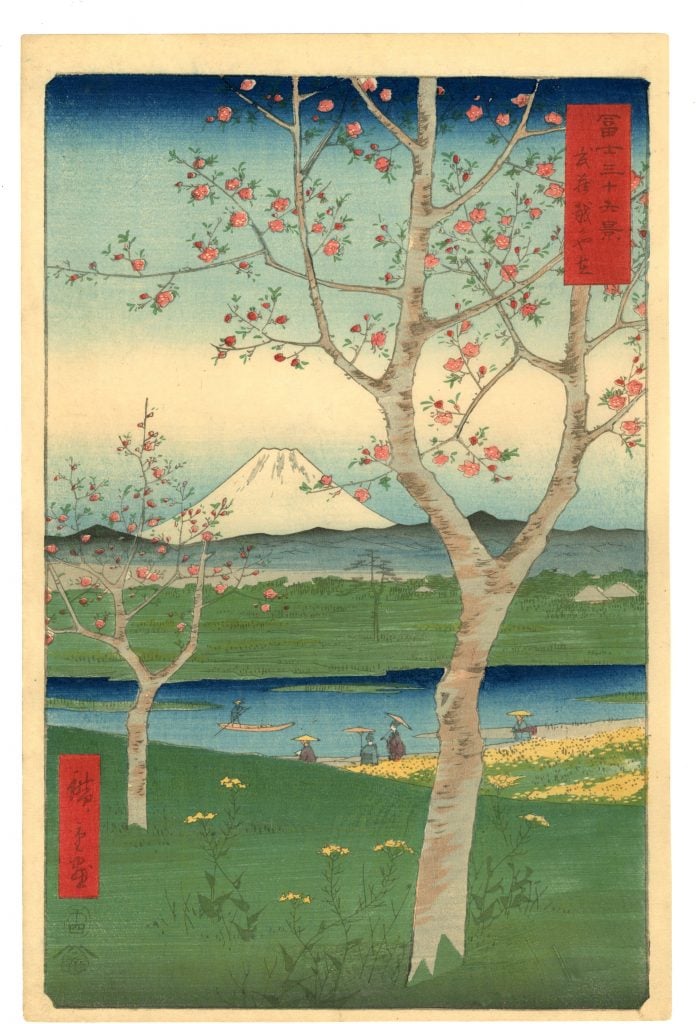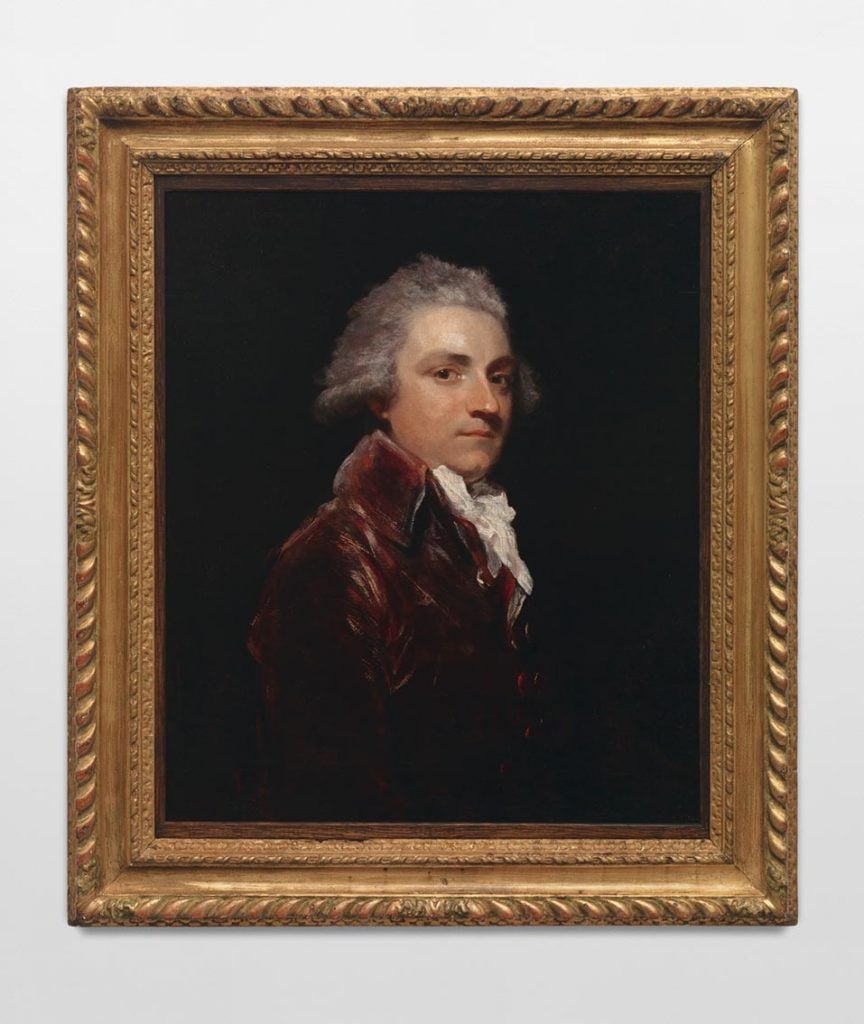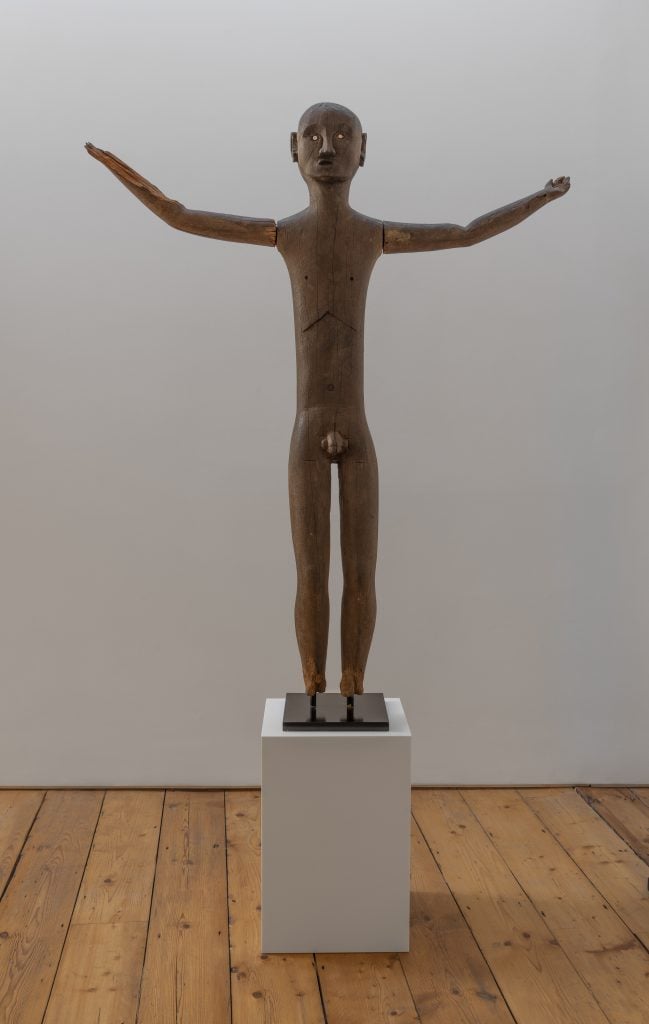Collecting objects and artworks has been a habit of artists throughout history, from Henri Matisse, who drew inspiration from his collection of decorative arts from Africa, to Andy Warhol’s dedicated patronage of young artists. British artist Julian Opie is no exception.
Opie’s art practice plays with ways of seeing by challenging our perception of the everyday, and he has built his own visual language that is informed at once by the vocabulary of classic portraiture and Japanese woodblock prints, Egyptian hieroglpyhs, as well as ordinary public signage. As such, the artist has throughout his career assembled a wide private collection of work that spans Roman sculpture to classical 17th-century portraits to work from contemporary artist peers.
A selection of works from Opie’s private collection will be shown alongside his work at a forthcoming exhibition at Newlands House Gallery in Petworth from November 6. We caught up with the artist about his collecting inspirations, how he badly covets a Monet, and the teeny Carl Andre sculpture that is constantly disappearing.

Utagawa Hiroshige (1797-1858), No. 14. Koshigawa in Musashi Province (Musashi Koshigaya zai). From the series Fuji sanjurokkei (Thirty-six Views of Mt. Fuji). (1858). Collection of Julian Opie.
What was your first purchase?
Not really sure. I think it was a Japanese Ukiyo-I print by Kunisada (not my favourite). With Ukiyo-I prints you can buy some of the greatest art works ever made for not so much money. The artists of this period did make unique paintings but their greatest works are arguably the large run woodblock prints. Condition and fading vary greatly but you can buy a Hiroshige or an Utamaro for modest sums.
What was your most recent acquisition?
Honestly? Today I asked to buy a piece of ambient music by a young musician, Archie Wingate. I often use music in my installations and have bought or swapped these with various musicians. The last object I bought was earlier this week, a 19th-century wooden ancestor figure post from the island of Timor. Over the last year I have been collecting a lot of things from Southeast Asia.
How does your own practice as an artist inform your collecting?
In two ways. I get guidance and inspiration from what other artists have made and also what I am currently interested in making leads me to find ways to understand and enjoy other artist’s work.

Joshua Reynolds, Wilson Gale Braddyll (1788). Oil on panel. Collection of Julian Opie.
Which works or artists are you hoping to add to your collection this year?
I don’t have a plan. It depends on what I come across. There are gaps that I’d love to fill. I’d like to buy the third great triptych of Hiroshige and also to own another and less damaged Fayum portrait from Roman period Egypt. These are painted in coloured wax and have survived well giving a clear and realistic snapshot of the people of the ancient world.
Which work do you most cherish?
Although I continue to enjoy and learn from the things I have bought, on a daily basis, for me collecting art is a way of engaging in the world rather than an amassing of treasures to cherish.
How do you acquire art most frequently?
From galleries. I always try to buy from good trusted galleries. They know their area and one can build up a good relationship, learn a lot and find great works.
Is there a work you regret purchasing?
When I start buying in a new area I can get a bit carried away and buy things that in retrospect weren’t perhaps necessary. I did sell a few of these recently which felt good.

Patang Statue, Dayak tribe Borneo. 19th C. Collection of Julian Opie.
What work do you have hanging above your sofa? What about in your bathroom?
Sofa: Roy Lichtenstein large interior print. Bathrooms are not great places to hang most art due to humidity. At the studio lavatory I rotate Hiroshige landscape prints.
What is the most impractical work of art you own?
Who thinks up these questions? I own a tiny magnetic Carl Andre sculpture that family members keep rearranging and is constantly in danger of being lost.
What work do you wish you had bought when you had the chance?
One of Alex Katz’s small paintings. There were a set of these in the next door booth at an art fair many years ago and I didn’t have the courage.
If you could steal one work of art without getting caught, what would it be?
Stealing is disrespectful. If it were a gift… A Monet of the Houses of Parliament on the Thames.










